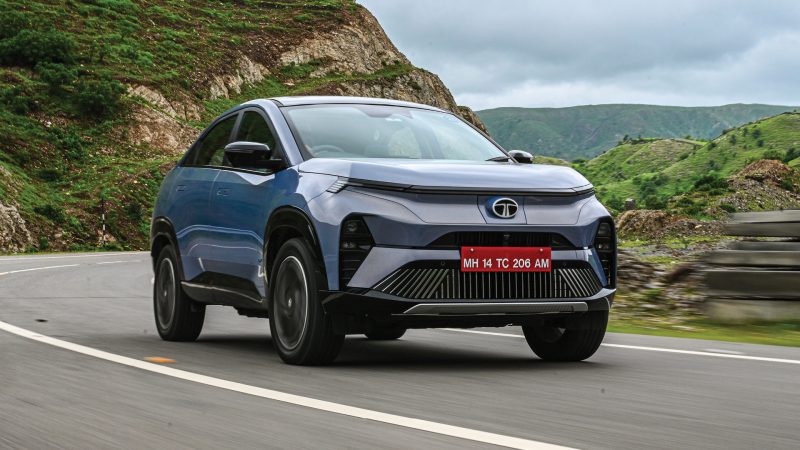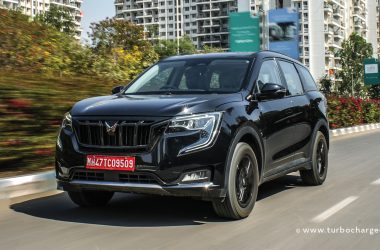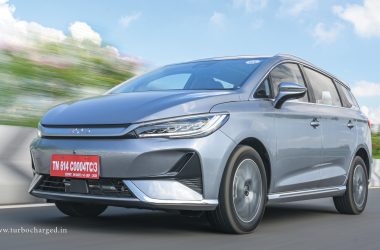It wouldn’t be wrong to say Tata Motors has played a crucial role in helping the mass market electric vehicle scene in India evolve. With its Nexon EV, followed by the Tiago EV, Tigor EV and Punch EV, Tata Motors has been enjoying a clear domination as far as mass market EVs go. So much so that this time, as it enters the hugely popular midsize SUV with the Curvv, the car maker has launched the Curvv’s electric version first! While the Curvv has been long time coming to say so, because we first saw the concept back in 2021, but yes, finally, the Curvv is here and on sale as we speak.
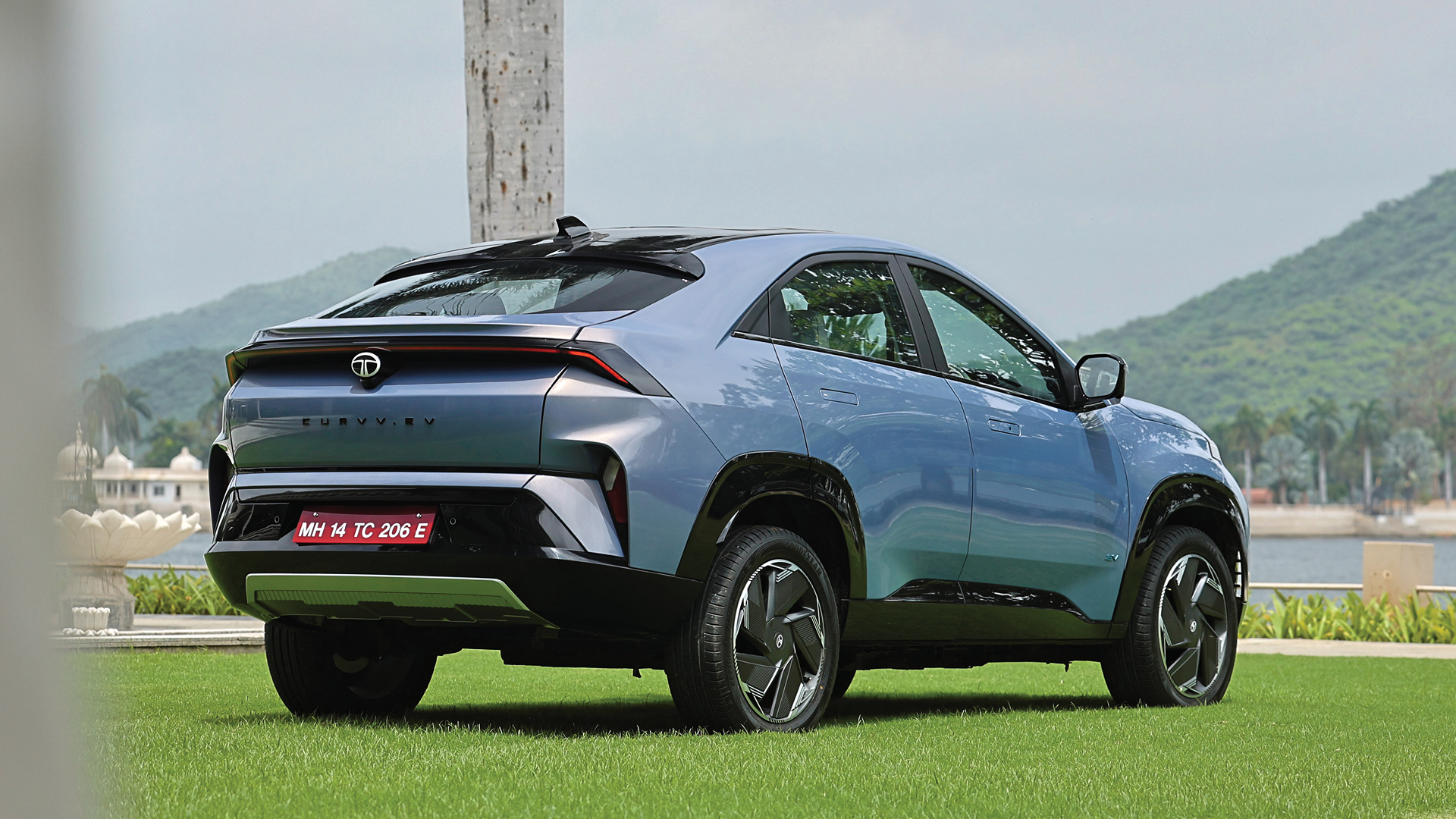
Coupe SUVs seem to be the design theme for 2024 among car makers, and the Curvv EV fits right in. Its front resembles the Nexon with a grille that’s very slightly different, which makes for a sense of familiarity, but at the same time, we would have liked a different face to help the Curvv stand out in the current sea of Nexons on our roads! Thankfully, that’s where the similarity ends though. The beauty of the Curvv EV’s design starts after the front end though, especially with the gloss black wheel arches and sloping roofline, typical of coupe SUVs, which merges into the C-pillar. This gives it a contemporary and upscale look akin to more expensive coupe SUVs. The traditional door handles have made way for illuminated, flush handles.
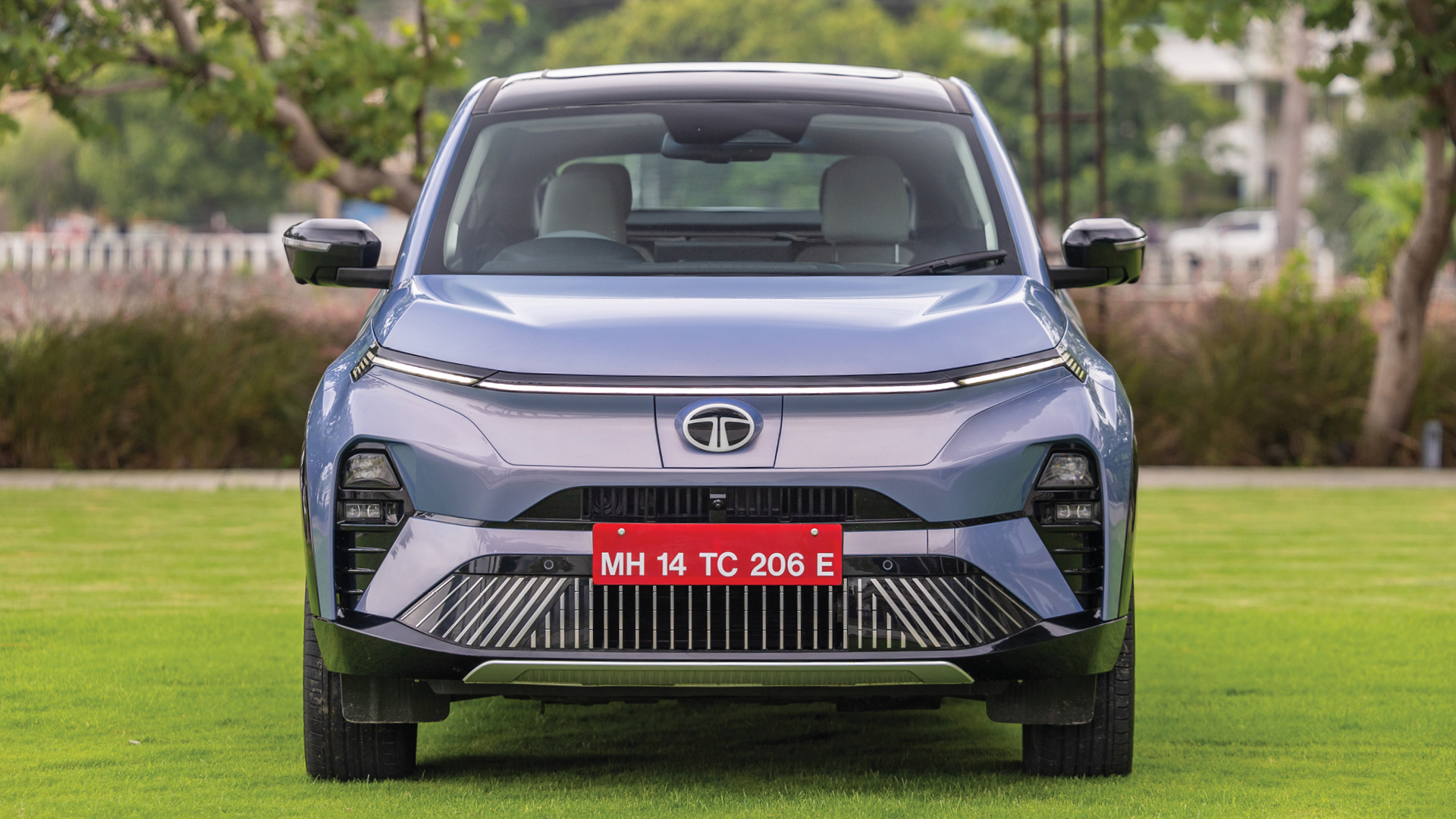
While the design is impressive, I believe a more banana-like flow of the lines from the front hood to the rear would have enhanced the Curvv’s side profile. The Curvv EV is – obviously – larger than the Nexon EV, as it is 4,310mm long, 1,810mm wide and 1,637mm tall and has a wheelbase of 2,560mm, a marginal increase of 62mm over the Nexon EV’s wheelbase. Unladen ground clearance is 190mm for the 45kWh battery variant and 186mm for the 55kWh battery variant. Our test car, finished in what Tata Motors calls the ‘Virtual Sunshine’ hue, which in essence is a light shade of blue, looked stunning thanks to its dual-tone finish and also got me a lot of attention on the road.
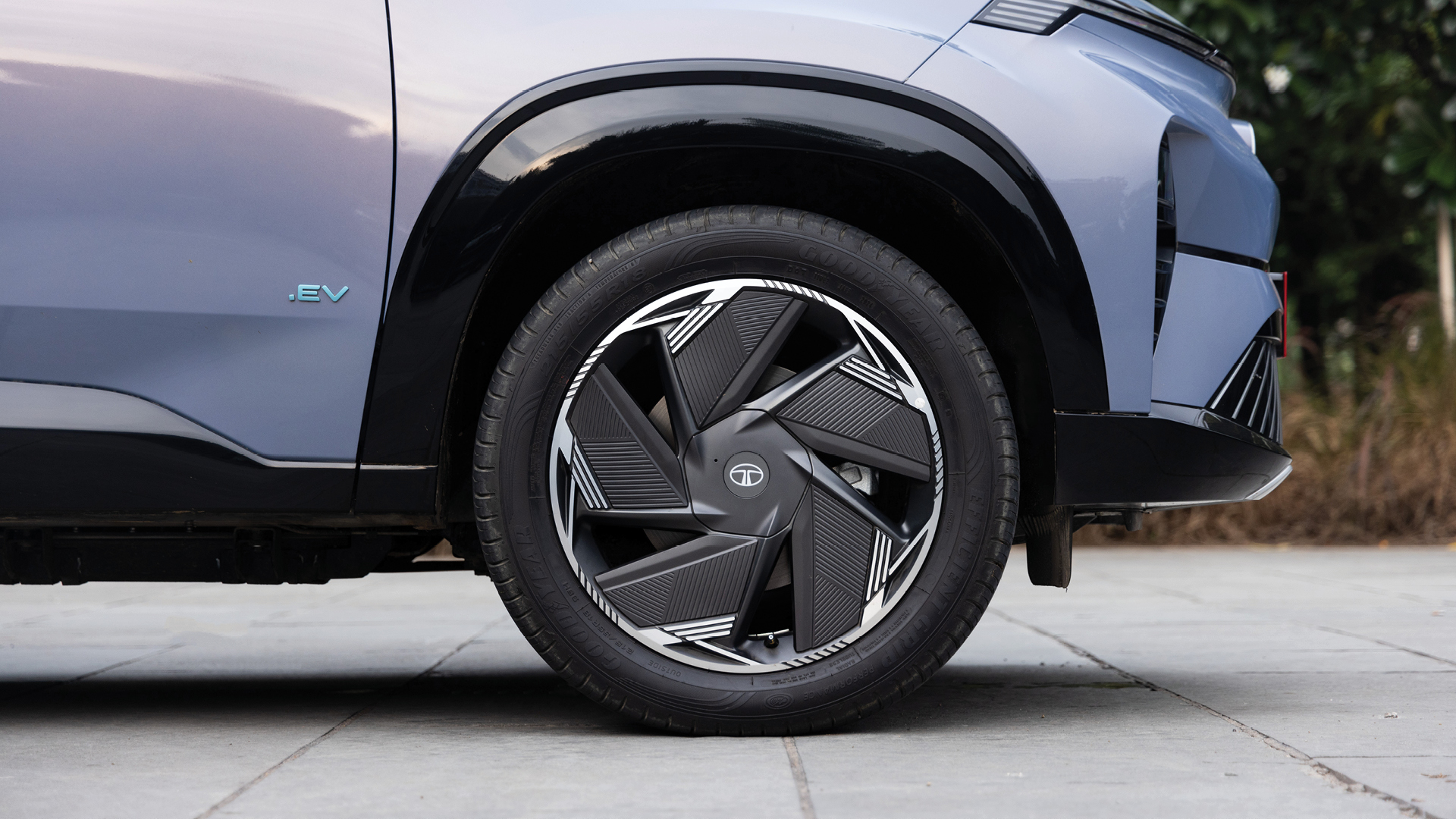
I was also impressed to note the improvements on the build quality front, as compared to the Nexon EV, especially the overall fit-finish levels. Panel gaps are inconsistent in some places, but not too glaring. Wheel and tyre sizes vary as per the versions as well and the top end version we drove was running 215/55 R18 tyres, which added to its appearance, though the gap in the wheel arches still looked a bit much. The spare wheel on our test car was a 215/63 R16 tyre though and not a full sized spare.
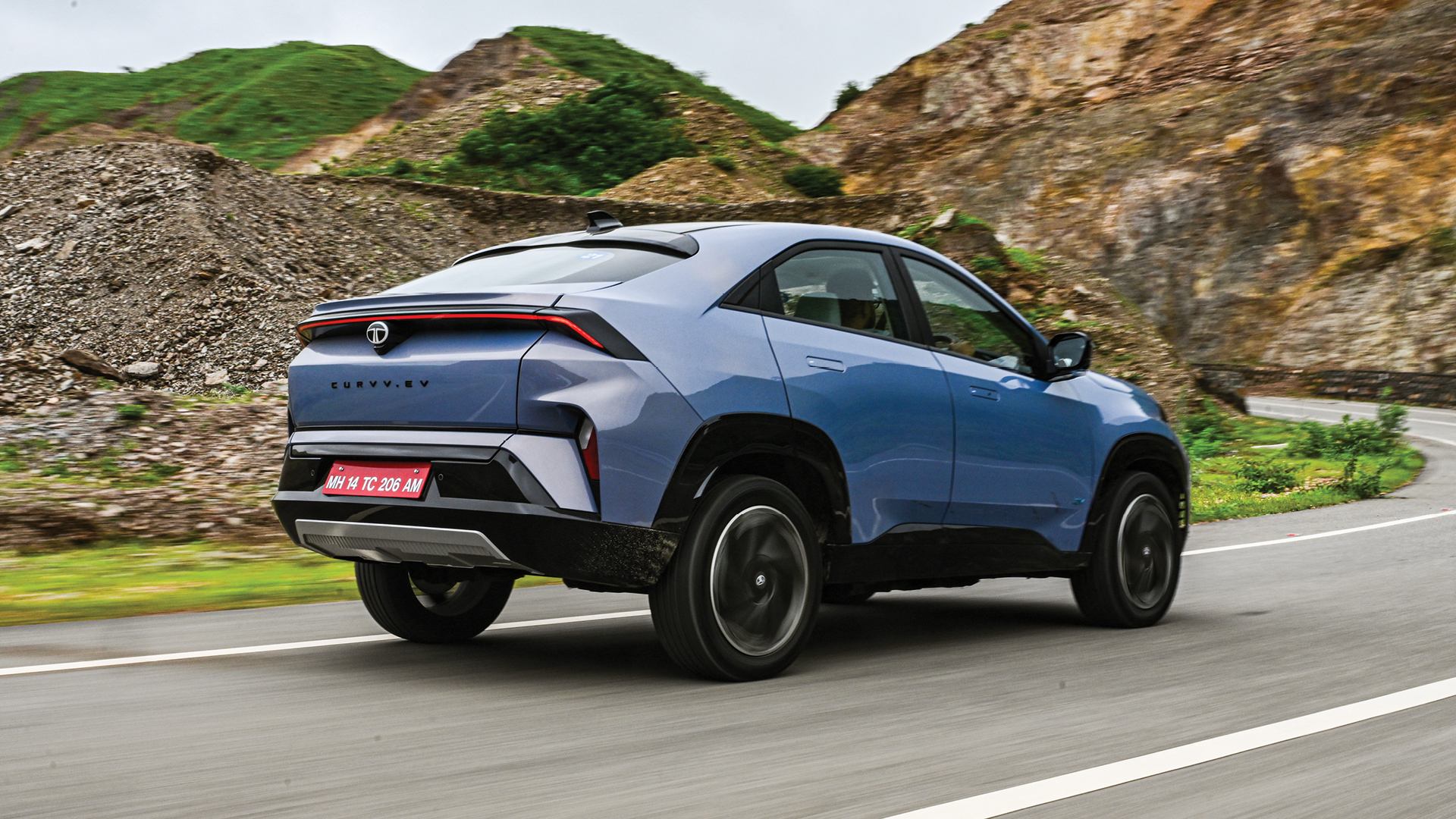
We drove the Empowered+ variant that sports a dual-tone, black and off-white interior theme. This again, apart from a few changes, looks quite similar to the Nexon EV’s interiors. That said, the leatherette inserts here with blue stitching, unique to Tata Motor’s EV line, and aluminium-like plastic inserts with horizontal slatted ribs add a nice touch to the cabin. While interiors feel premium, a few rough edges become noticeable after spending some time inside. In keeping with its positioning as a midsize SUV, the Curvv EV’s second row offers good amounts of space as well, especially kneeroom and legroom. The front seats, finished in off-white and grey, are comfortable but snug, especially for someone on the plus size like me. The driver’s seat is electrically adjustable but lacks memory settings, while the passenger seat gets manual height adjustment, and both front seats are ventilated.
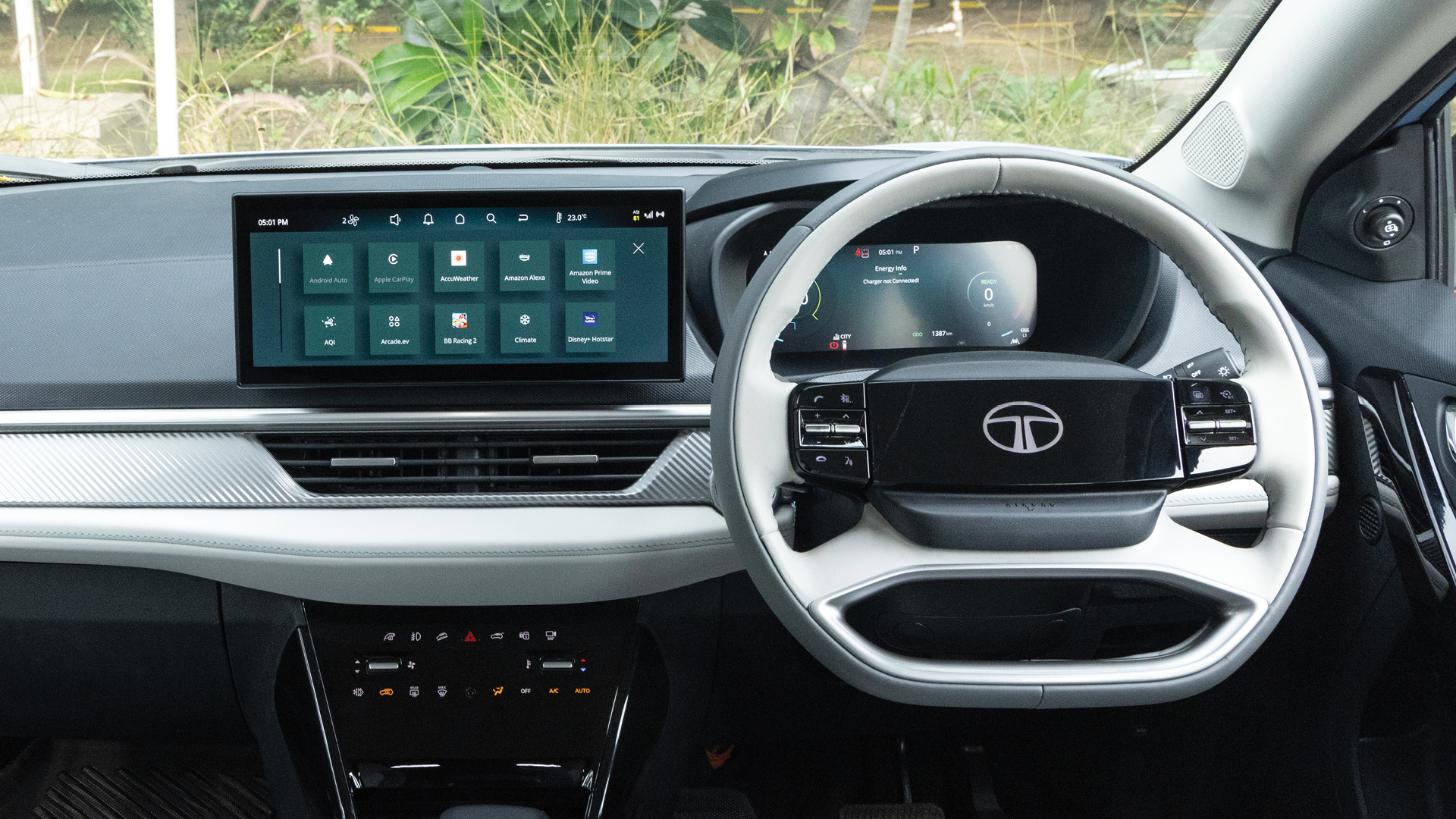
Getting into the rear is a slightly cumbersome affair owing to the coupe SUV design, especially the sloping roof, as also the positioning of the rear wheel arch. Space at the back is adequate for two adults and having three adults sit abreast would be a bit of a squeeze, besides which, thigh support could have been better – this being the electric version, the battery pack in the floorboard does sit a tad too high. Headroom, as expected in a coupe SUV, is slightly less, but is not as bad as I expected. The Curvv EV’s rear bench has a 60:40 split, helping increase boot volume as and when needed. Boot volume is 500 litres as standard, but with the rear seat folded down fully, you get a massive 973 litre boot, which is very impressive. In addition, the Curvv EV also comes with a 11.6-litre frunk – the Empowered variant we drove gets it as standard while lower variants get it as an accessory.
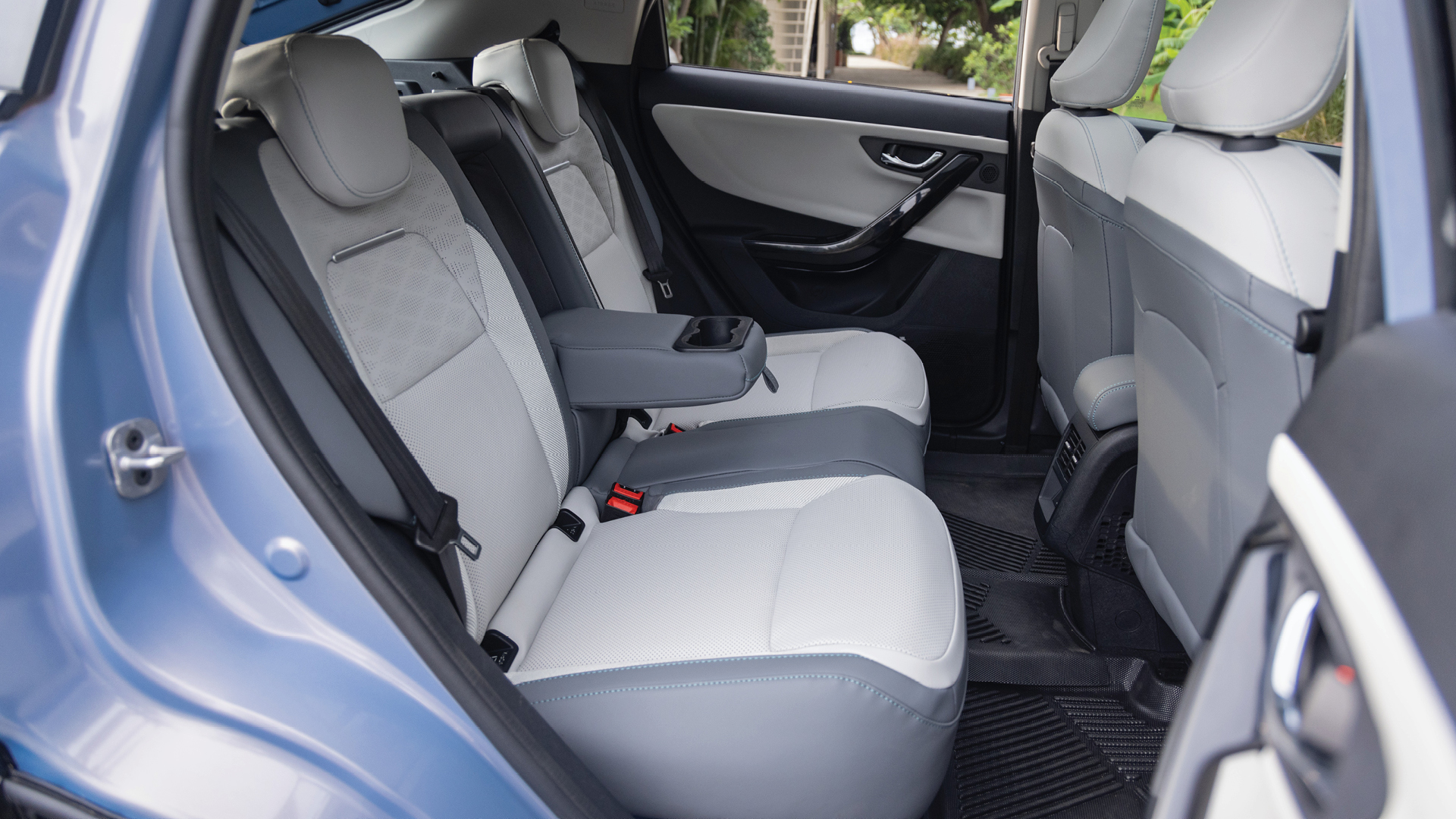
As is the case with most new-age Tata cars, especially its electric cars, the Curvv EV is loaded with features. These include the same, crisp-looking 12.3-inch touchscreen we’ve seen on the Nexon EV previously, along with a very good sounding, 9-speaker Harman audio system,
with surround sound presets that worked well. The Curvv EV’s audio system in fact offers better sound than more expensive cars – which goes to show Tata’s commitment towards offering good equipment levels. This feeling is further augmented by the inclusion of Level 2 ADAS which is becoming the norm in the midsize SUV segment. What’s also noteworthy here is that Tata Motors claims to have tuned the ADAS for typical Indian conditions, something I was happy to note on the go, especially on Udaipur’s narrow, single lane roads.
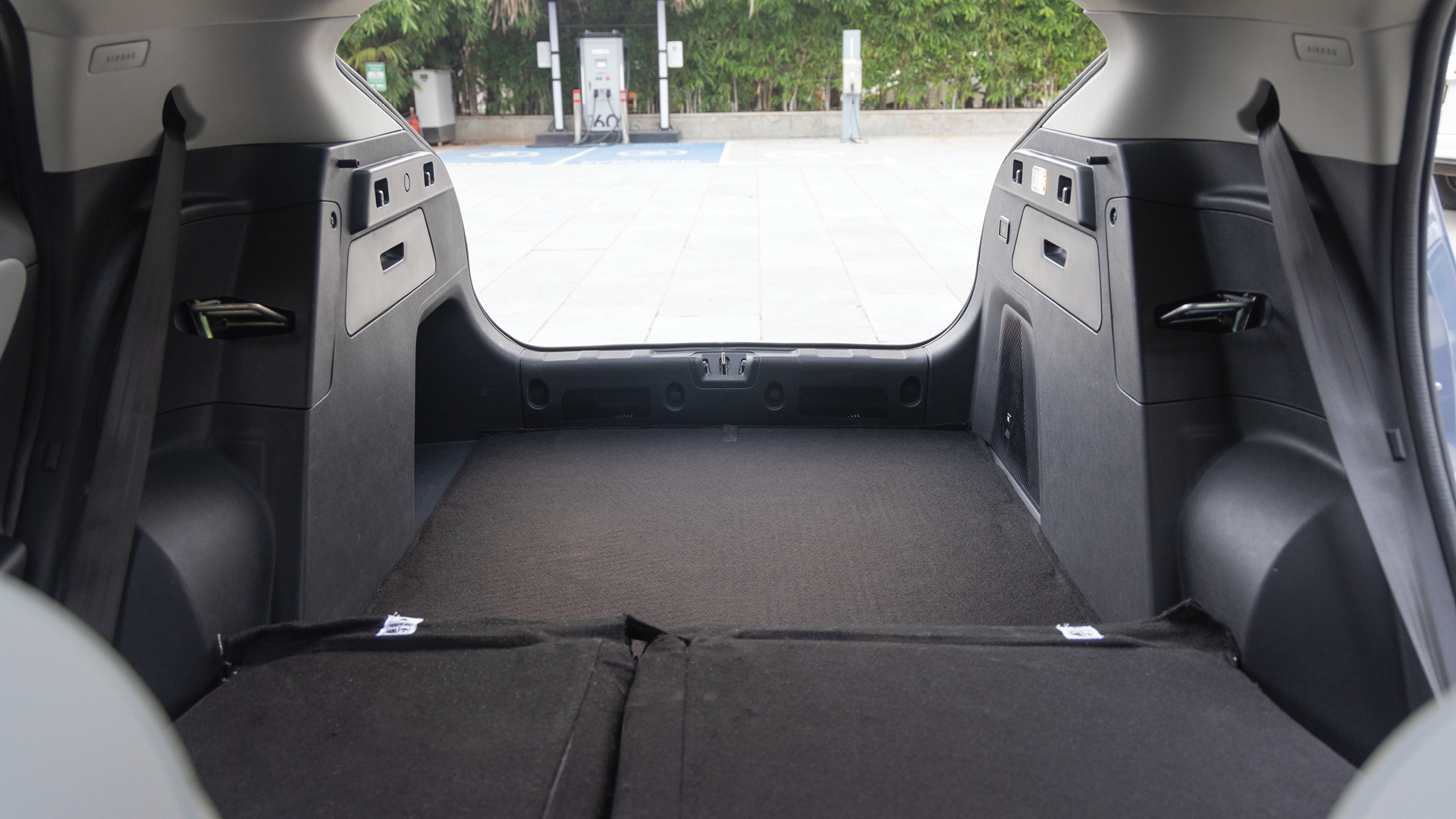
The Curvv EV is also equipped with niceties like a sensor-actuated, powered tailgate, panoramic sunroof with voice command actuation, rain sensing wipers, auto-dimming inside mirror, a recline function for the rear seat, ambient lighting that lets you change colours, wireless Android Auto and Apple CarPlay, wireless charging, a motor-controlled charging lid, dual zone climate control, Tata’s latest Arcade.ev app drawer with 20 apps like Spotify and Netflix, vehicle-to-vehicle charging and V2L, sunshades for the rear windows, and more. Phew! Another interesting bit I noticed was the inclusion of braille markings on the key fob, which is quite thoughtful. Oh, there is a new design key fob as well – finally, Tata Motors has updated the design after well over a decade I guess.
As I mentioned above, the Curvv EV is on offer with two battery options, a 45kWh battery pack or a 55kWh unit, both of which are larger than the Nexon EV’s. Claimed ranges are 502km and 585km for the 45kWh and 55kWh battery packs respectively. Real world figures suggest 330-350km per charge for the smaller battery pack and 400-425km for the bigger one, translating to around Rs 1/km which is brilliant value. The above mentioned battery packs confirm the Curvv EV being Tata Motor’s most powerful EV till date and the single motor, powering the front wheels, offers 150PS and 215Nm or 167PS and 215Nm depending on the version. We only drove the more powerful version with the 55kWh battery pack on board, and expectedly, it is quick. Claimed 0-100kmph is 8.6 seconds and sub-10 seconds is possible in the real world.
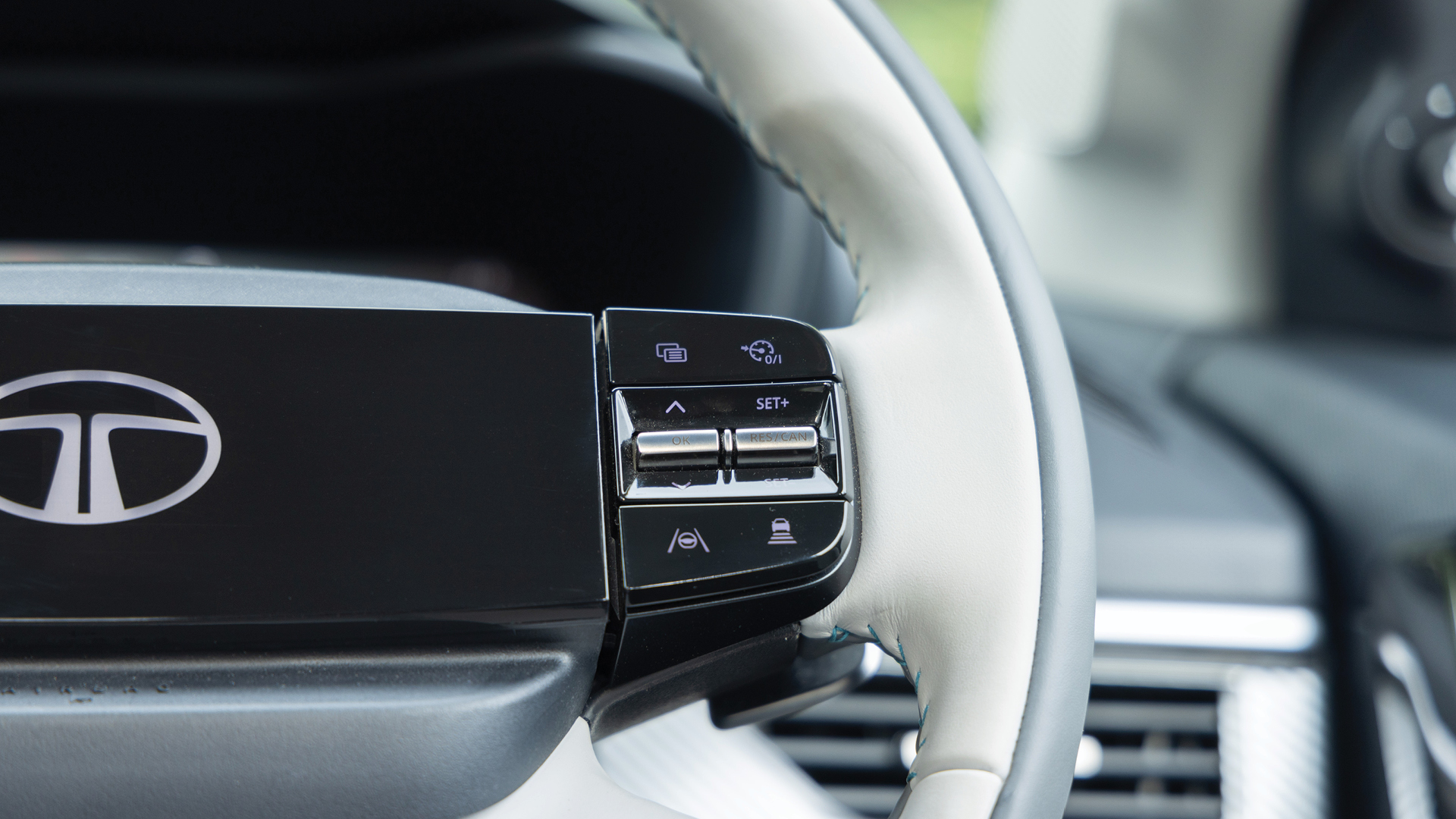
The Nexon EV’s three driving modes have been carried over, including Eco, City and Sport. City is a good balance of range and performance both, while Sport helps you enjoy your time behind the wheel the most. Sport is also where the throttle is most responsive and with peak torque available right from the word go, the Curvv EV can offer neck-snapping acceleration when demanded. What I also liked is the fact that except for Eco mode where the throttle felt a little snappy, overall throttle responses were smooth and progressive. And while the Curvv EV rockets ahead to 100kmph in Sport mode, power delivery tapers off past the mark, in a bid to conserve charge, and top speed is limited to 160kmph.
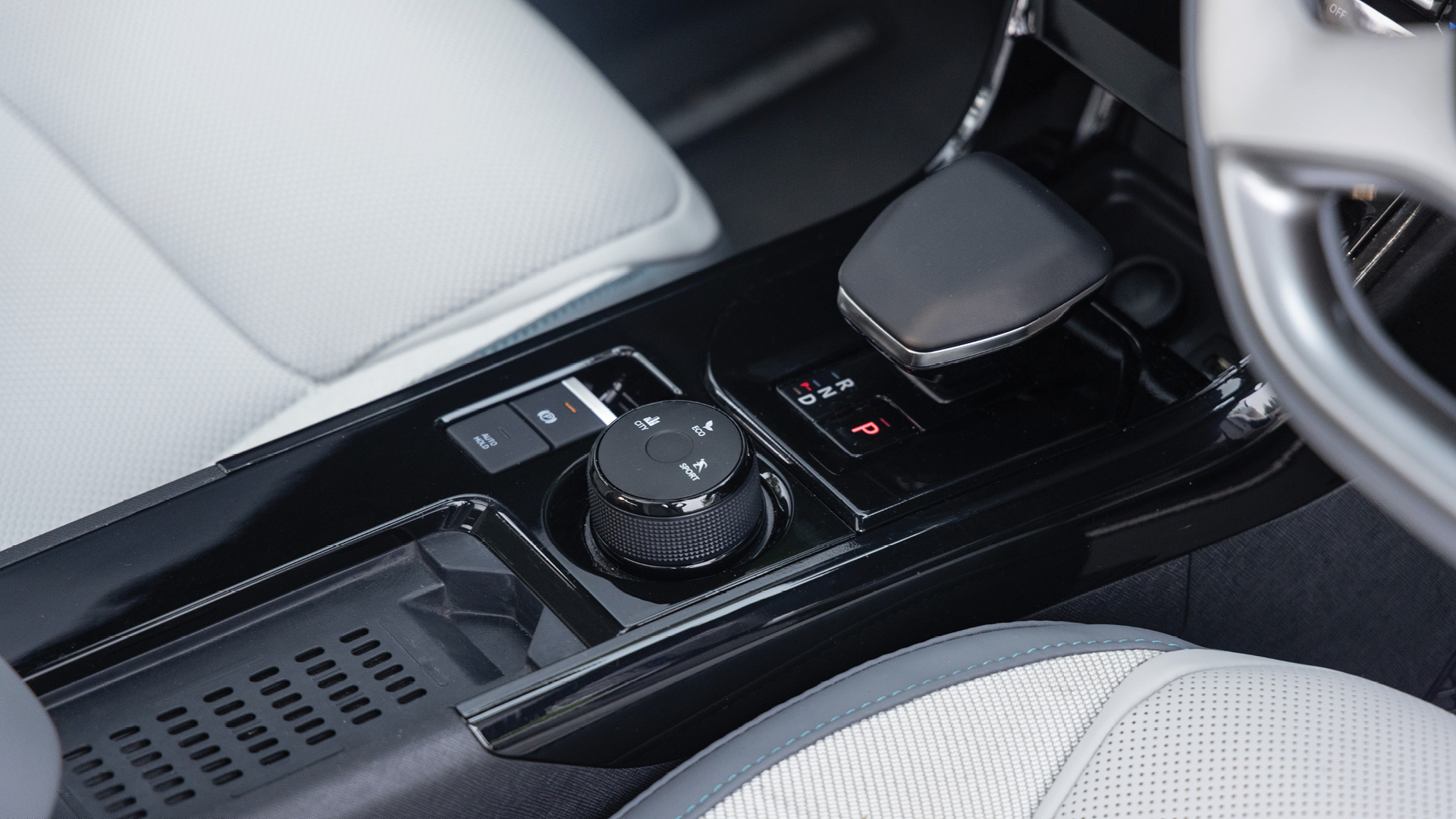
The Curvv EV also features four levels of regenerative braking, adjustable using paddles behind the steering wheel. Level 0 offers no regen, while Level 1 has minimal regenerative interference, providing a smooth driving experience. Level 2 feels slightly restrictive but is well-suited for bumper-to-bumper traffic while Level 3 feels almost like you’re applying brakes, but will not bring the car to a complete stop. The Curvv EV is on offer with three charging options, a 15A home socket, a 7.2kW AC wall box and obviously, a DC fast charger. The 55kWh variant takes 21 hours to charge from 10% to 100% with the home socket and 7.9 hours with the 7.2kW wall box. The Curvv EV supports up to 70kW DC fast charging, and will let you recharge from 10 to 80 percent in just 40 minutes. The Curvv EV will let you charge another EV at up to 5kVA and also supports V2L charging at up to 3.3 kVA, which is quite good.
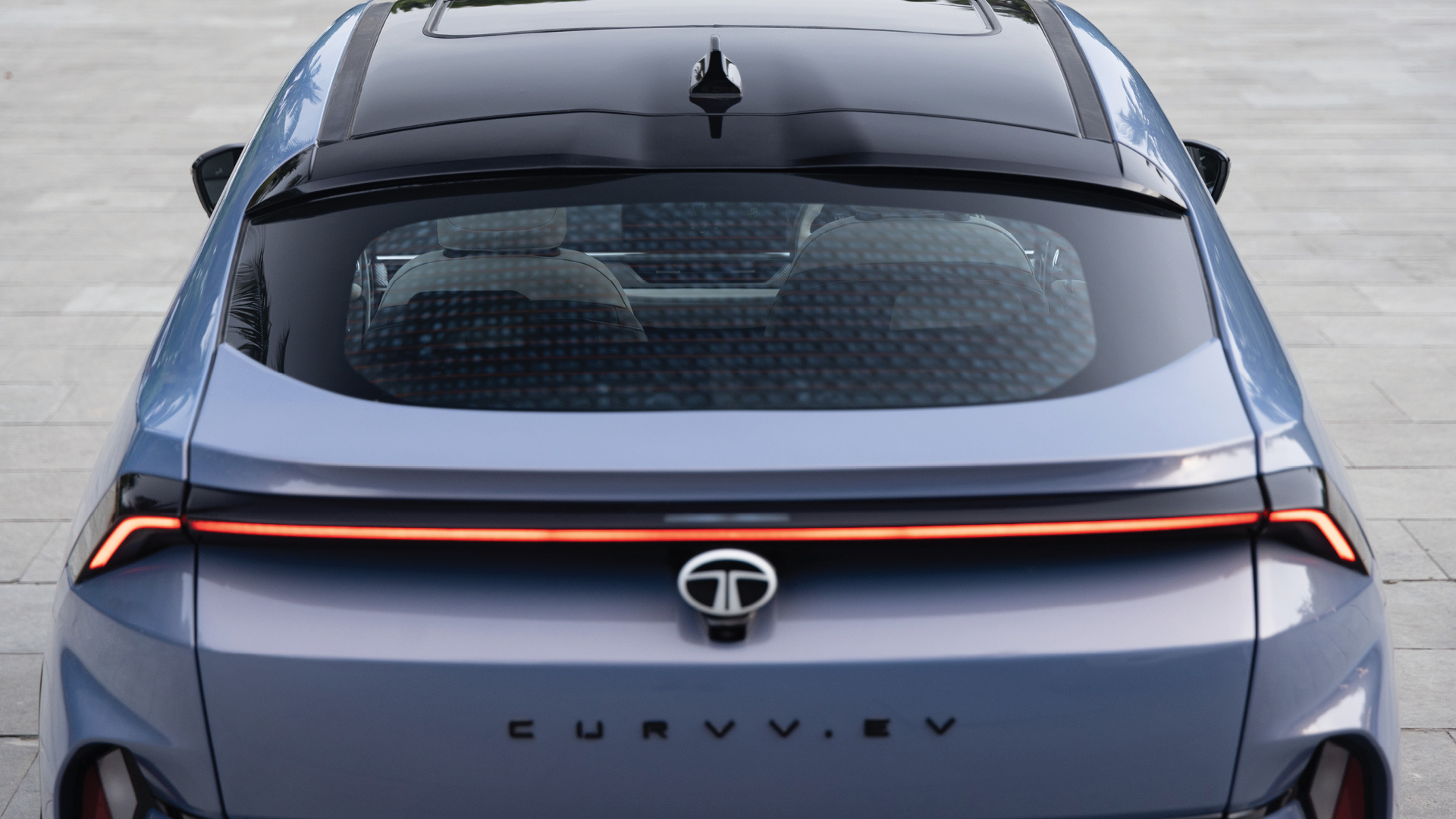
The Curvv EV sits suspended on McPherson struts at the front and a twist beam at the rear with dual-path struts. The suspension feels borderline stiff, given the higher weight of the car considering that this is an EV and has to haul that heavy battery pack sitting in its floorboard. That said, the Curvv EV soaks up potholes and ruts with aplomb and overall ride quality is impressive, though you might occasionally feel a thud over rough patches. Overall, the suspension does a good job though, as stability at highway speeds is commendable too. Handling overall is good too, as the steering wheel provides good feedback, while the suspension ensures the car holds its line around corners well. What’s more, the Curvv EV is equipped with disc brakes all round, which ensures the SUV is quick to slow down, in a reassuring manner.
Prices for the Curvv EV begin from Rs 17.49 lakh ex-showroom for the base variant with the 45kWh battery pack, going up to Rs 21.99 lakh ex-showroom for the top variant with the 55kWh battery pack. To sum it up, expectations from the Tata Curvv have been high since it is the car maker’s highly anticipated entry into the uber-popular midsize SUV segment. And with the Curvv EV, Tata Motors seems to have started proceedings in the segment on the right foot, as the SUV is nice to drive, is spacious, comfortable and well-equipped. The coupe SUV design could have been executed slightly better in my opinion, but overall this is a well-sorted product that can give more expensive cars a run for their money.





